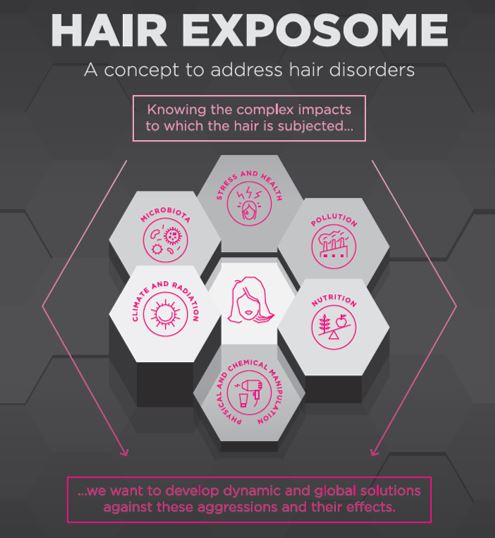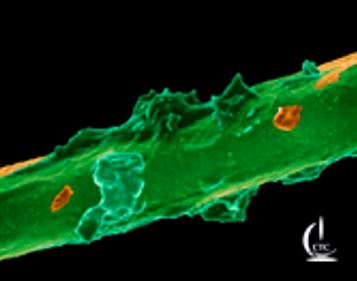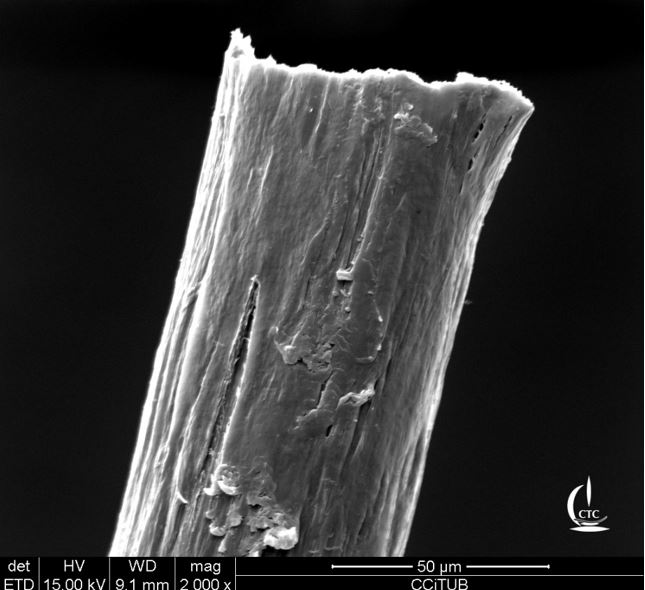Hair Exposome, a concept to address hair disorders from a new perspective by Beauty Cluster Barcelona
28 February 2018
Authors: Eni Gómez1, Eva Toribio2, Montserrat Delor3, Judit Morlà Folch4*
1 Technical director at Centro de la Tecnlogía Capilar (CTC), 2 Market Development Manager at Symrise, 3 Sales Director Spain/Portugal Cosmetic Ingredients Division at Symrise, 4 Innovation Manager at Beauty Cluster Barcelona
Introduction
The concept “exposome” refers to the total sum of the multiple exposure factors humans face throughout their lives: exposure to chemical substances, radiation, alimentation, stress… This concept was described in 2005 by Dr. Christopher P. Wild, current director of the International Agency for Research on Cancer (IARC). Since the publication of such idea, there has been a growing interest in the investigation of the exposome and how it relates to the predisposition to developing certain diseases. Factors such as the pollution exposure, food and nutrition, lifestyle study or radiation are under constant study in order to characterize their effects in human health, with the aim of characterizing and quantifying the risk factors for human pathologies that could be related with the environmental factors.
While more is known about the relationship between the exposome and human health or certain pathologies, the effects on the skin or the hair have not received the same attention. Some articles have been published on exposome studies related to the skin, among them, J. Krutmann, M.D et.al (Journal of Dermatological Science 2017, 85, 152-161). This paper describes the skin ageing exposome in terms of the external and internal factors and their interactions, the authors propose that environmental factors involved in the skin ageing exposome fall into six major categories: a) sun radiation, b) air pollution, c) tobacco smoke, d) nutrition, e) several less well-studied miscellaneous factors such as stress and sleep deprivation, and f) cosmetic products.
Scientific studies of the exposome concept as it relates to human hair are, on the other hand, extremely scarce. What are the consequences of pollution or diet for hair loss, for example? What are the endogenous and exogenous factors that determine the quality, quantity, and colour of the hair? Can an understanding of the hair exposome help to prevent hair disorders?
In order to answer these questions, more cosmetics industry research is required, and particularly haircare industry research. The Commission of Hair Cosmetics of the Beauty Cluster Barcelona (BCB), led by the companies Centro de Tecnología Capilar (CTC) and Symrise together with BCB, have become instrumental in the development of the concept Hair Exposome (HE), with the purpose of dealing the hair disorders from a global perspective.
Definition of the Concept “Hair Exposome”
HE is defined as the set of external and internal factors, and their interactions, that provoke a somatic response related to the hair health (Figure 1).
Figure 1. Representation of the six categories identified as comprising the Hair Exposome.
Before looking at the component categories of the HE, it is important to consider the complexity of the hair structure which can be divided into two parts; the external part (inert and visible) and the internal part – the living skin or hair follicle. External and internal factors will have different effects on different parts of the hair. The following are the six categories identified as comprising the Hair Exposome:
1. Stress and Health – Stress can trigger hormonal variations causing an effect on the hair cycle. Physiological stress has been identified as a factor in hair loss, and alterations in hair colour and structure. Drugs, tobacco or alcohol, diseases, and certain special states such as pregnancy or menopause can accelerate hair loss, as well as the production of dandruff or oily hair. Additionally, sleep deprivation is as well known to be associated with a negative impact on hair health. The skin is regenerated mainly during the sleeping hours, and in particular, the hair mostly grows during those hours of rest. Disturbed sleep or variations in circadian cycles can also alter the hair cycle. Questions are increasingly being asked about whether such factors such as these should be taken into account during the formulation of hair care products
2. Pollution – External pollution refers mainly to airborne particles that can be accumulated in the hair and cause damage to the protective layer (Figure 2). As a result, the hair can be damaged, dried and discoloured. Exposure to air pollution occurs not only outdoors, but also indoors, as for instance with exposure to tobacco smoke. How could the hair be protected from the negative effects of those pollutants?
Figure 2. Scanning Electron Microscopy (SEM) of a Caucasian hair coated with polyvinyl and pollution particles. Image provided by Centro de Tecnología Capilar (CTC).
3. Nutrition – It is important to consider the importance of diet for the good formation of the hair. Deficiencies and alterations in the diet can affect hair development and cause hair weakness. Moreover, the food that we ingest could contain certain contaminants that can be accumulated in the hair and alter their formation. As the relationship between nutrition and health and the human genome is increasingly studied, specific nutritional practices have been identified as optimal for individual genetic profiles. Considering that food intolerance and allergies are becoming more frequent, what influence do these factors have on the scalp and hair? Can the beauty industry use this information when formulating haircare products.
4. Physical and chemical manipulation – The technical processes of hairdressing (chemical and physical), can affect both the external and internal parts of the hair and scalp. Processes such as discolouration or permanent straightening can be aggressive to the hair (Figure 3) and damage the scalp. Haircare products can also have an impact on both parts of the hair structure. The high frequency of washing and hair shaft manipulation weaken their structures and alter them. That is why the development of new safer, more effective and less harmful cosmetics is crucial.
Figure 3. Scanning Electron Microscopy (SEM) of a damaged Caucasian hair, subjected to discoloration and hair straighteners (2,000x). Image courtesy of the Centro de Tecnología Capilar (CTC).
5. Climate and radiation –The hair is in permanent contact with the environment and therefore climatic variations can modify their characteristics. Solar radiation and sudden changes in temperatures have effects on the hair and scalp. Should the haircare products be formulated specifically depending on the season?
6. Microbiota: The scalp has a sophisticated and varied presence of microorganisms whose imbalance can alter its functioning and lead to hair disorders. It is very important to know the causes of microbial imbalances in the scalp in order to find the right cosmetic solutions.
In summary, the Hair Exposome concept addresses hair disorders from an innovative perspective, analysing the influences on hair health holistically, instead of treating signs of hair damage independently as has been the practice hitherto. This concept, promoted by Beauty Cluster Barcelona, aims to open new opportunities for collaboration between companies in the hair sector in order to develop dynamic and global solutions against the stresses to which the hair and scalp and subjected.
Contact
Judit Morlà Folch
Innovation Manager at Beauty Cluster Barcelona
innovacio@beautyclusterbarcelona.com











 Follow us on Linkedin!
Follow us on Linkedin!
You must be logged in to post a comment.